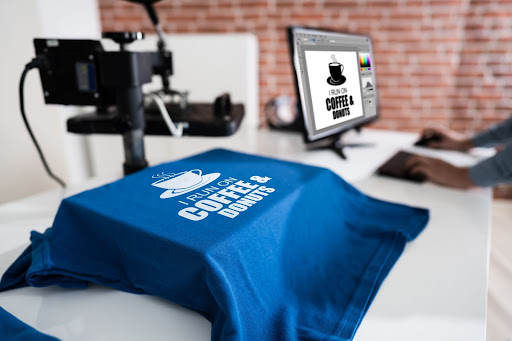As a fashion enthusiast, you know shirts have a lot of potentials. They’re generally easy to work with and can be styled in many ways. And one of the ways you can be creative and stylish with your shirt is through shirt printing.
What Is Shirt Printing?
From the term itself, shirt printing is the process of personalizing a shirt by transferring a graphic design, artwork, or even text to the fabric. And today, there are different ways to do this, from manual to digital tools. And while you may not need all these methods at once, it can be handy to know what options are out there in case you want to switch things up or try something new.
In this article, we’ll cover the types of shirt printing methods you need to know.
-
Screen Printing
Screen printing is perhaps the most common printing method for T-shirts and other garments. It involves using a mesh screen to block the ink from the garment and then printing it on the screen. Since the ink is absorbed well into the fabric, this type can result in clean lines and sharp images that are easy to see and read.
Screen printing is also versatile; it can be used to print on any fabric, including cotton, polyester, denim, or woolen fabrics. Additionally, you can use this technique to create custom apparel like hats, bags, and jackets, as well as promotional items like posters or business cards.
Due to this type’s popularity and promising results, it can be easy to look for custom screen printing services to help you revamp your shirts by giving them a splash of color or design.
-
Sublimation Printing
Sublimation printing is another easy and popular method used for printing clothing. The process generally includes choosing or creating the design you want with a computer and printing it into a sublimation paper. This type uses heat to transfer the ink from the special paper onto the fabric and cools down before it hardens.
The sublimation process may work best on polyester and poly/cotton blends as these fibers can tolerate high temperatures without melting or losing their shape as cotton does. When applied correctly, sublimation prints can be long-lasting, vibrant, and durable. In addition, they won’t crack or fade over time.
-
Vinyl Heat Transfer
Vinyl heat transfer printing is a method of applying images to fabric through pressure and heat. As the name suggests, vinyl heat transfers are made from a special type of vinyl with adhesive backing.
The process works by placing the design onto your fabric and then applying heat with an iron for about 30 seconds. The image will then stick to your garment, and you can peel the film off as soon as it cools down.
-
Direct-To-Garment Printing
Direct-to-garment printing is a method in which the design is printed to the fabric directly. Usually, it is done with an inkjet or digital printer. The inks used for direct-to-garment printing are specially formulated to bond permanently to the garment when heat is applied during curing. As such, it’s crucial to use only approved inks with this method.
One of the most suitable fabrics for this type of printing is cotton. However, you can also opt for cotton blends and other fabrics, including polyester.
-
Water Transfer Printing
Water transfer printing can be a good option for large orders. As this method allows you to print more than one color on the shirt, it can be ideal for creating designs that include multiple colors or intricate patterns. The design is printed on water-soluble films and then dissolved in water. The ink adheres around the garment or material when it is submerged.
Water transfer printing can also be useful in situations where it would be difficult to embroider your design or if other obstacles make embroidery impractical. For instance, if you have a design with many curves or intricate details, this method might be your best bet as it can reproduce these details effectively while keeping them perfectly crisp and clear.
-
Embroidery Machine
Although embroidery is still popular, an embroidery machine makes it possible for anyone to create beautiful designs on fabric without years of practice using needles and threads by hand. All you need is your chosen design software program installed on your computer.
You can also edit existing images by adding text or changing colors until you’re satisfied with the design. From there, you can upload it onto the sewing machine through the use of a USB stick.
-
Laser Engraving/Cutting
The laser engraving and cutting method uses a laser to burn or cut designs into your shirt. Ideally, laser engraving can be used on cotton or polyester shirts, while laser cutting can be done on polyester, silk, lace, and cotton. Both processes are permanent, meaning they won’t wash off over time like most other types of shirt printing.
When choosing between these two options, it’s essential to consider how much detail is going into your design and what type of shirt you want it printed on.
Conclusion
Shirt printing can be a way to design and customize your garment as you please, and you can be as creative as you want. With the different types of printing available, you can decide which one works best and is suited for your needs.


